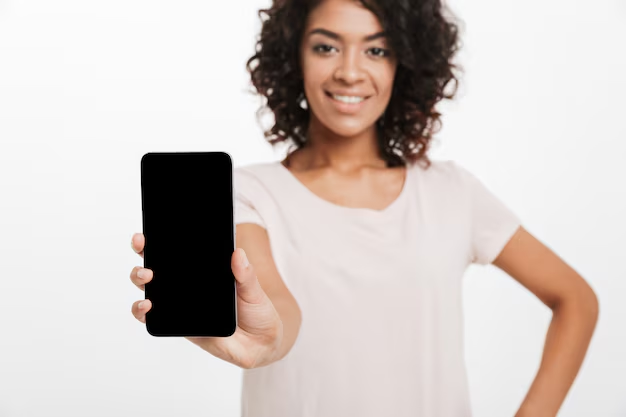Seamless Transition: Transferring Your Data from Samsung to iPhone
Switching from a Samsung to an iPhone can indeed feel like stepping into a new world. With differences in user interfaces, ecosystems, and functionalities, understanding how to efficiently transfer your precious data is crucial. Fear not—this guide provides a step-by-step walkthrough to ease your transition, ensuring that your contacts, photos, messages, and apps find their new home on your iPhone without a hitch.
Understanding the Essentials of Data Transfer
Before embarking on this digital migration, let’s explore why understanding the device ecosystems is essential. Samsung and iPhone operate on Android and iOS platforms respectively. Both have unique data structures and methods of handling information. Fortunately, tech advancements have bridged these gaps, allowing smoother transfers through several methods.
Key Things to Consider Before You Begin
- Compatible Apps: Some apps available on Samsung may not be present on iPhone. Check app availability in the App Store.
- Storage Needs: Ensure that your new iPhone has enough space to accommodate all your data from the Samsung device.
- Cloud Compatibilities: Samsung may use Google services extensively; it's essential to adapt to iCloud on your new iPhone.
Methods to Transfer Data from Samsung to iPhone
1. Reliable Path: Using Apple's 'Move to iOS' App
One of the easiest ways to transfer data is using Apple's Move to iOS app. This application is designed to migrate data efficiently, but only works when setting up your iPhone for the first time.
Steps to Follow:
- Download the App: Install the Move to iOS app from the Google Play Store on your Samsung device.
- Initiate Setup on iPhone: During your iPhone setup, choose the option to move data from Android.
- Connect Both Devices: Use a secure Wi-Fi network, and a code will appear on your iPhone. Enter this code into your Samsung.
- Select Data: Choose what you want to transfer—contacts, message history, photos, videos, web bookmarks, and more.
- Complete Transfer: Once the data transfer is complete, you can continue setting up your iPhone.
2. Option Two: Manual Transfer for Greater Control
If you prefer a more hands-on approach or have completed initial setup, a manual transfer is viable. It requires a bit more time and effort, but provides a greater degree of control over what is transferred.
Manual Transfer Process:
- Contacts and Calendars: Use Google or Outlook to sync contacts and calendar details, then add these accounts to your iPhone.
- Photos and Videos: Transfer via Google Photos or Dropbox. Simply install these apps, upload your existing media, and download them on your iPhone.
- Music and Documents: Transfer documents using cloud storage services like Google Drive. For music, use apps like Apple Music which might help organize your tracks automatically.
3. Cloud Solutions for Easy Sync
Gone are the days of endless cables and memory cards. Utilize the power of the cloud for a seamless transition.
- Google Drive and iCloud: Backing up documents and essential data into Google Drive is simple. Post transfer, download them via iCloud on your new device.
- Email Services: Use your email to share and sync notes, contacts, or small files.
💡 Quick Tips for Efficient Transfer:
- ⚙️ Backup First: Always backup your data before starting the transfer to avoid data loss.
- 🌐 Stay Connected: Ensure continual internet connectivity for cloud-based transfers.
- 🔄 Regular iOS Updates: Keep your new iPhone updated for the best performance.
Post-Transfer: Getting Acquainted with Your New iPhone
Once the data transfer is complete, the adventure doesn’t end—it's time to familiarize yourself with iOS.
Adapting to iOS Features
App Store Exploration: Understand that the App Store might offer different apps or variations compared to Google's Play Store. Explore new apps that might enhance your experience.
Customizing Your Phone: Adjust settings, notifications, and preferences to tailor your iPhone experience.
iCloud Utilization: Make the most of iCloud's features such as storage optimization, Find My iPhone, and synchronous backups.
Troubleshooting Common Hiccups
- Missing Contacts: If you find contacts missing, try re-syncing your email accounts on the iPhone.
- Incomplete Transfers: Restarts and network issues can disrupt transfers. Reattempt after ensuring stable conditions.
- App Functionality: Some apps may not have direct equivalents. Discover alternatives within the App Store.
📌 Critical Takeaways for New iPhone Users:
- 🔍 Explore Differently: iOS might handle apps and settings differently—adapt to its ecosystem.
- 🔋 Battery Management: Learn the battery feature settings to maximize life on your new device.
- 📱 Settings Familiarity: Delve into settings for a smoother, tailored user experience.
Stay Future-Ready: Preserve Your Data Wisely
In a rapidly evolving tech world, staying ahead involves regularly updating and backing up your data. Modern devices allow seamless integration and transfer of information. Ensure regular backups—this way, whether you remain loyal to iOS or swap with Android in the future, your data remains secure and accessible.
Embracing Change
Switching devices, especially from Android to iOS, might seem challenging initially. However, embracing change is about staying patient and open to exploring fresher, efficient ways of data management.
Switching your digital life from Samsung to iPhone is a significant step, and done correctly, it can breathe new life into your experience. By leveraging these robust methods, you'll facilitate a smooth voyage across platforms while keeping your cherished data intact. 😊📱

Related Topics
- How Can I Transfer a Video From Iphone To Computer
- How Can I Transfer Apps From Iphone To Ipad
- How Can I Transfer Apps From One Iphone To Another
- How Can I Transfer Contacts From Iphone To Iphone
- How Can I Transfer Contacts From One Iphone To Another
- How Can I Transfer Data From Iphone To Android
- How Can I Transfer Data From Iphone To Iphone
- How Can I Transfer Data From Iphone To Samsung
- How Can I Transfer Files From Android To Pc
- How Can I Transfer From Iphone To Samsung